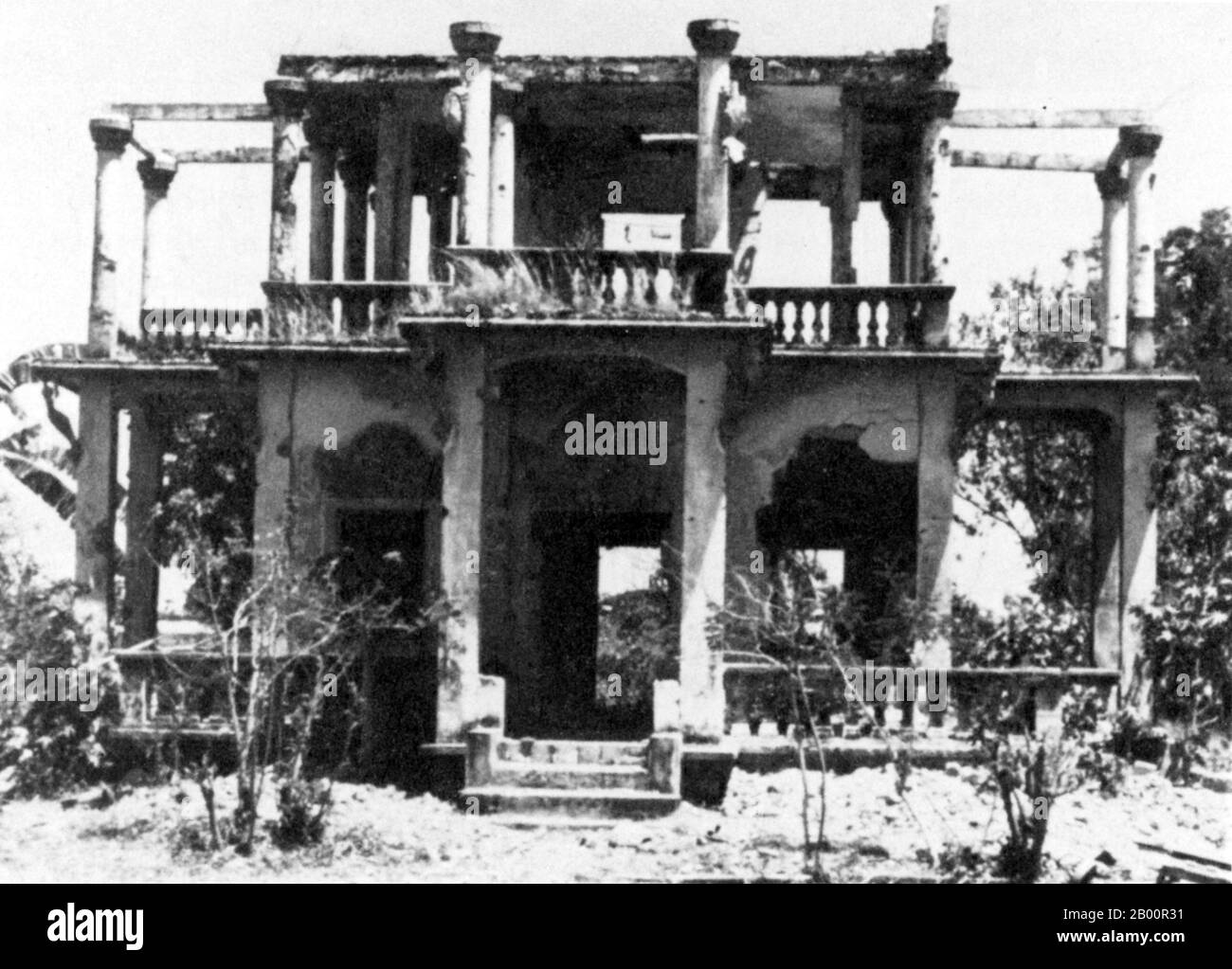Cambodia: Ampil Bey Temple near Oudong, destroyed during the Khmer Rouge period (1975-1979). The Khmer Rouge, or Communist Party of Kampuchea, ruled Cambodia from 1975 to 1979, led by Pol Pot, Nuon Chea, Ieng Sary, Son Sen and Khieu Samphan. It is remembered primarily for its brutality and policy of social engineering which resulted in millions of deaths. Its attempts at agricultural reform led to widespread famine, while its insistence on absolute self-sufficiency, even in the supply of medicine, led to the deaths of thousands from treatable diseases (such as malaria).

Image details
Contributor:
CPA Media Pte Ltd / Alamy Stock PhotoImage ID:
2B00R31File size:
51.3 MB (1.5 MB Compressed download)Releases:
Model - no | Property - noDo I need a release?Dimensions:
5000 x 3589 px | 42.3 x 30.4 cm | 16.7 x 12 inches | 300dpiPhotographer:
Pictures From HistoryMore information:
This image could have imperfections as it’s either historical or reportage.
The Khmer Rouge, or Communist Party of Kampuchea, ruled Cambodia from 1975 to 1979, led by Pol Pot, Nuon Chea, Ieng Sary, Son Sen and Khieu Samphan. It is remembered primarily for its brutality and policy of social engineering which resulted in millions of deaths. Its attempts at agricultural reform led to widespread famine, while its insistence on absolute self-sufficiency, even in the supply of medicine, led to the deaths of thousands from treatable diseases (such as malaria). Brutal and arbitrary executions and torture carried out by its cadres against perceived subversive elements, or during purges of its own ranks between 1976 and 1978, are considered to have constituted a genocide. Several former Khmer Rouge cadres are currently on trial for war crimes in Phnom Penh.